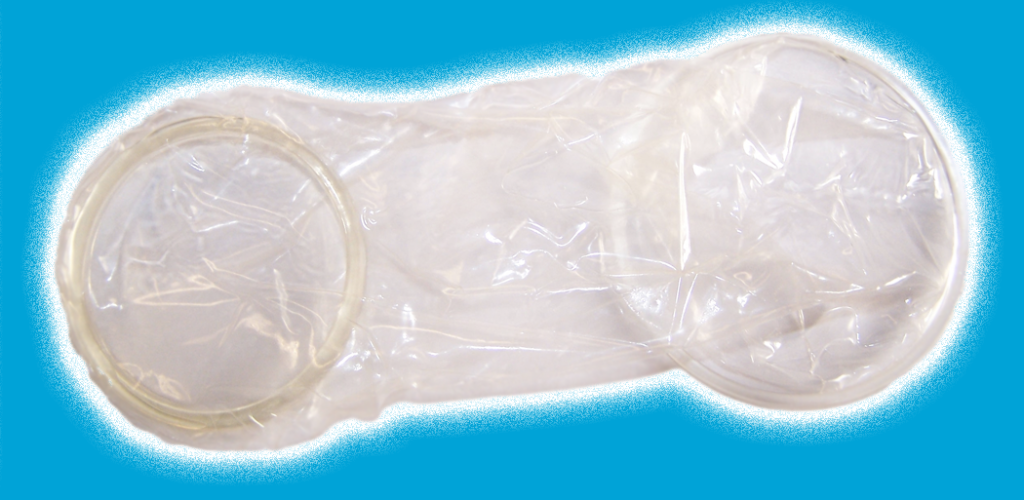Internal Condom
What is the internal condom?
- An internal (female*) condom is a soft, loose fitting, non-latex pouch that lines the inside of the vagina** or anus during sex.
- The internal condom lowers your risk of both unplanned pregnancy and sexually transmitted infections (STIs).
How does the internal condom prevent pregnancy and STIs?
- In order to get pregnant, sperm must enter your vagina, swim up into your uterus and fertilize an egg that has been released from the ovaries during ovulation. The condom prevents semen (cum) that contains sperm from reaching an egg.
- In order to pass on most STIs, bodily fluids containing an STI like anal fluids, vaginal fluids, semen or blood, must come into contact with someone else’s mucus membranes (inside the penis**, mouth, anus, or vagina). The condom prevents bodily fluids from coming into contact with mucus membranes.
How effective is the internal condom?
- Internal condoms are 95% effective at preventing pregnancy. This means that if 100 people use condoms correctly for one year, only 5 people will get pregnant.
- Because condoms may be used incorrectly, they are closer to 80% effective at preventing pregnancy with typical use.
- Condoms offer excellent protection against most STIs, but are less effective in preventing STIs that are spread from genital skin- to-skin contact, like herpes or HPV, because condoms may not cover all of the affected areas.
How do you use the internal condom?
- Internal condoms can be used inside the vagina or anus. Put them in before there is any contact with someone else’s body. They can be inserted up to 8 hours before having sex.
- Do not use the internal condom and the external condom at the same time.
- Condoms should be stored in a cool, dry place away from direct sunlight. Your pocket or wallet is not ideal storage.
- Before you use a condom, check the expiry date and press on the condom wrapper to make sure there is still air inside. This means the package hasn’t been damaged.
- To insert the internal condom for vaginal sex, you can lie down but it may be easier to insert while in an upright position. Try lifting one leg or squatting.
- For anal sex, you can squat, or get on your hands and knees and have your partner insert it. Your partner could also remove the inner ring, put the condom over their erect penis and then put the penis inside the anus, going slowly and using lots of lube.
- If you have a physical disability, you may need a partner or support person to help you insert and remove the condom.
- Squeeze the condom to one side and open the package without using your nails or teeth which could tear it.
- The condom has a soft ring at each end. The ring at the closed end is used to put the condom inside and help keep it in place. The ring at the open end sits outside the body and partially covers the vulva (during vaginal sex) or the anus (during anal sex).
- Grasp the ring at the closed end and squeeze it together so that it becomes long and narrow.
- Insert the condom inside the vagina or anus, pushing the inner ring as far as it will go, being careful not to twist it. The internal condom comes with lube on the outside to help with insertion. The outer ring should sit on the outside, over the vulva or anus.
- Once the condom is in, you can add more lube to the inside of it or to the tip of your partner’s penis for added pleasure.
- Once the internal condom is inserted, the inner ring can be removed. However, the inner ring can bump up against the penis during sex in way that is really pleasurable. The inner ring can also help keep the condom in place during vaginal sex. It’s a matter of preference – do what feels good for you.
- During sex, you or your partner may want to check periodically to ensure the outer ring is still on the outside of the body and hasn’t been pushed inside of the vagina or anus.
- Ensure your partner’s penis goes inside the condom, not underneath or beside it.
- Because the internal condom doesn’t require an erect penis, your partner doesn’t have to pull out immediately after ejaculation.
- After anal or vaginal sex, either partner can grab the outer ring, twist it and gently pull it from the vagina or anus. This prevents semen from spilling out of the condom.
- Use a new internal condom for every act of vaginal or anal sex. Do not reuse the condom.
How to start using the internal condom
- Anyone can purchase a condom without a prescription at pharmacies and many sexual health clinics. The internal condom is approximately $3/condom.
- You can sometimes get them for free or reduced cost at sexual health clinics like PPT’s Health Services.
- Try putting a condom inside yourself when you are on your own to get some practice. The more familiar you are with safer sex tools, the easier it will be to use them.
What are the side effects of the internal condom?
- Some people report decreased sensitivity when using condoms. To make condoms more sexy and pleasurable: add lube to the inside of the condom or on the penis or toy; make trying the internal condom into a fun activity; have a partner put the condom inside you; or have them talk sexy while you put it in.
Advantages of the internal condom
- Condoms (internal and external) are the only birth control method that also reduce your risk of getting STIs.
- You only have to use this method when you have sex.
- You can put it in up to 8 hours in advance, so you don’t necessarily have to do anything right before you have sex.
- Because it goes inside of you, your partner’s penis doesn’t have to be fully erect.
- During vaginal sex, the outer ring can stimulate the clitoris.
- It is non-latex and can be used by people with a latex allergy.
- There are no hormonal side effects. People who can’t or do not want to take hormonal birth control can use this method.
- They don’t affect your ability to get pregnant in the future.
- You don’t need a prescription to buy them.
Disadvantages of the internal condom
- You have to do something each time you have sex. Try making putting a condom in a fun and sexy part of foreplay.
- The person who wears the condom has to agree to use one. If they don’t want to put in the condom, you can offer to do it for them. If you have difficulty negotiating condom use with your partner(s), please see the page “Talking About Safer Sex.”
- The internal condom can be expensive.
Download Teen Health Source’s guide on how to use internal condoms: How To: Internal Condoms
For a downloadable resource on this topic, please visit Planned Parenthood Toronto Factsheet Database.
If you have questions about this topic, feel free to contact one of our peer educators. [Link]
*Internal condoms are often called female condoms, so we have included this in brackets. We know that people with vaginas don’t always identify as female and internal condoms are used by people of all genders.
**We know that these aren’t the words everyone uses for their bodies (eg. trans folks), and support you using the language that feels best for you.
Last Edited: May 2020






